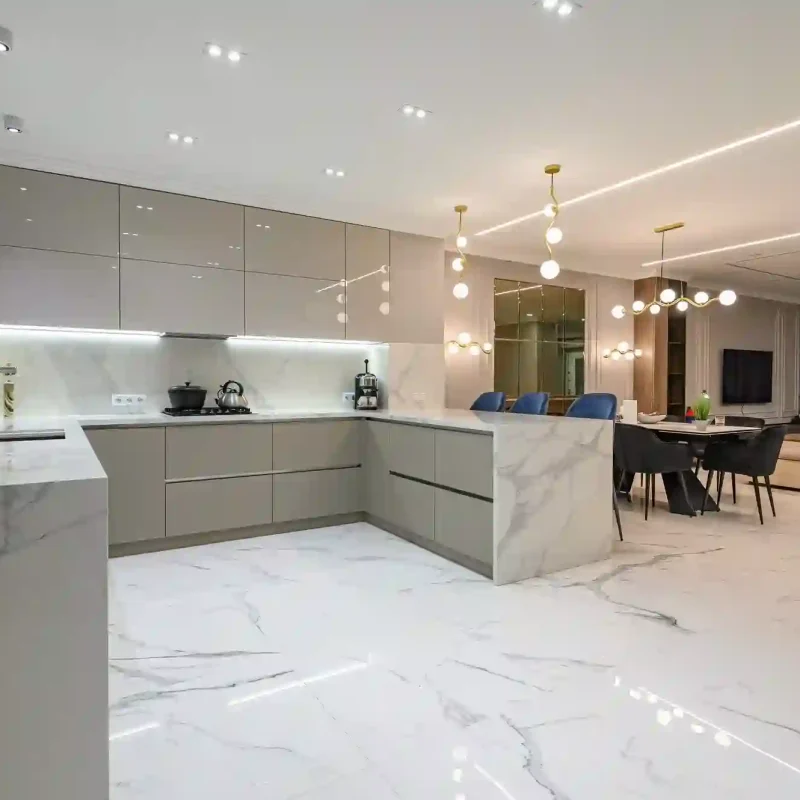
For Bespoke Kitchen Installation where to start
Starting a bespoke kitchen installation can be exciting, but it’s a significant project. Here’s a breakdown of where to start to make the process smoother and less stressful:
1. Define Your Needs and Wants (The “Dream Kitchen” Phase):
- Functionality: How do you actually use your kitchen? Think about your cooking habits, how many people use the space, and what appliances are essential. Do you need a baking area? A breakfast nook? A large island for entertaining? Prioritize function over aesthetics initially.
- Style: What’s your aesthetic? Modern, traditional, farmhouse, industrial, minimalist? Browse magazines, websites (Pinterest, Houzz, Instagram), and visit showrooms to gather inspiration. Create a mood board!
- Budget: This is essential. Bespoke kitchens are an investment. Set a realistic budget before you fall in love with specific features. Get quotes early in the process. Be prepared for costs to creep up, so have a contingency (10-20%).
- Layout: Consider the flow of your kitchen. The “work triangle” (between the sink, stove, and refrigerator) is a good starting point, but think about your specific workflow. Do you need to move plumbing or gas lines? This will impact the budget.
- Storage: Think about everything you need to store. Pots, pans, dishes, food, spices, etc. Plan for adequate storage solutions, including drawers, cabinets, pantry space, and perhaps a clever use of corner spaces.
2. Professional Design and Planning (The “Reality Check” Phase):
- Kitchen Designer/Architect: This is highly recommended for a bespoke kitchen. A good designer can translate your vision into a practical and beautiful design, considering your space, budget, and local building codes. They’ll create detailed plans and elevations.
- Measurements: Precise measurements are crucial. Double and triple-check everything. Your designer will handle this, but it’s good to be aware of the importance.
- Materials: Work with your designer to choose materials for cabinets, countertops, backsplash, flooring, etc. Consider durability, maintenance, and cost. Order samples!
- Appliances: Select your appliances early. Their dimensions and specifications will influence the kitchen design.
- Lighting: Plan your lighting carefully. You’ll need ambient lighting, task lighting (under cabinets, over the island), and accent lighting. Consider the mood you want to create.
- Ventilation: A powerful range hood is essential, especially if you cook frequently. Make sure it’s properly sized for your stove.
3. Choosing a Kitchen Installer (The “Making it Happen” Phase):
- Experience: Look for installers specializing in bespoke kitchens. Their experience with high-end materials and complex designs is critical.
- Reputation: Check online reviews and ask for references. Visit previous projects if possible.
- Quotes: Get detailed quotes from multiple installers. Make sure the quotes include everything (labor, materials, disposal).
- Communication: Choose an installer you communicate well with. Clear communication is essential throughout the project.
4. The Installation Process (The “Dust and Debris” Phase):
- Timeline: Work with your installer to create a realistic timeline. Be prepared for potential delays.
- Communication: Maintain regular communication with your installer. Address any questions or concerns promptly.
- Inspections: Depending on your location, you may need inspections for plumbing and electrical work.
- Project Management: If you’re not using a general contractor, you’ll need to manage the project yourself, coordinating different tradespeople (plumber, electrician, tiler, etc.).
5. The Final Touches (The “Almost There” Phase):
- Punch List: Create a “punch list” of any remaining tasks or imperfections. Review it with your installer.
- Clean Up: Construction is messy. A thorough cleaning is essential before you can truly enjoy your new kitchen.
6. Enjoy Your Bespoke Kitchen! (The “Worth It” Phase):
- Maintenance: Understand the care and maintenance requirements for your chosen materials.
Key Considerations Throughout:
- Permits: Check with your local building department about necessary permits.
- Flexibility: Be prepared for unexpected issues. Renovations rarely go exactly according to plan.
- Contingency Fund: Always have a contingency fund for unexpected costs.
Planning is key to a successful bespoke kitchen installation. Take your time, do your research, and don’t be afraid to ask questions. It’s a significant investment, but a well-designed and installed bespoke kitchen can transform your home and how you live in it.
- Bathroom Renovation
- Full transformations
- Shower and bathtub installations
- Vanity upgrades, tiling, and flooring
- Smart fixtures and modern designs
- Bedroom Renovation
- Master bedroom redesigns
- Custom built-in wardrobes and storage solutions
- Enhanced lighting, flooring, and acoustics
- Space planning and design consultations
- Bespoke Kitchen Installation
- Custom kitchen design & layout planning
- High-quality cabinetry, worktops, and integrated appliances
- Tailored finishes for London homes
- Expert installations ensuring functional, stylish spaces
- Additional Renovation Solutions
- Living room upgrades
- Office or study renovations
- Bespoke design consultations
- Emergency repairs and scheduled maintenance
- Fixture installations (sinks, toilets, showers)
- Comprehensive maintenance programs
- Gas line installations and repairs
- Gas leak detection and solutions
- Gas certification ensuring compliance with London regulations
- Boiler installation and servicing
- Radiator maintenance and replacements
- Underfloor heating solutions
- Energy-efficient upgrades for London properties
- Electrical Certification & Upgrades
- Lighting design and smart home integrations
- Rewiring and power system upgrades
- Electrical Certification & Upgrades
- Issuance of electrical certificates
- Consumer unit replacement and upgrades
- Adherence to local London codes and standards